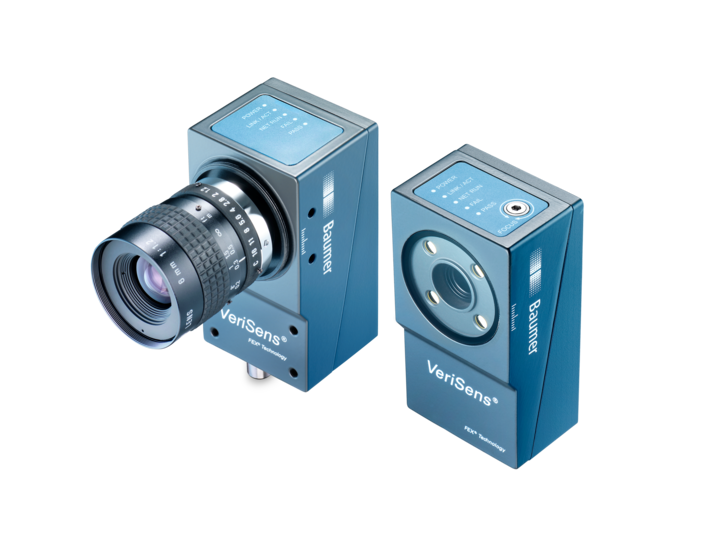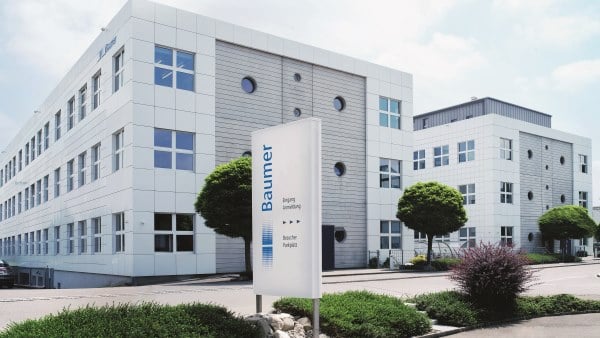Jun 18, 2019
Images taken with a fisheye lens deliver an interesting perspective. That being said, image distortions can be a problem for industrial image processing applications, as there is a risk that the images cannot be analyzed or will produce errors. Thanks to real-time correction for distortion, shading and perspective bias, Baumer now offers a smart and simple way to analyze images accurately for VeriSens vision sensors. We then have a shot reminiscent of a bird’s-eye view of the corrected images.
Precise image analysis thanks to real-time distortion and shading correction
Are you familiar with fisheye lenses? The extremely wide angle captures entire sceneries in a single image. Yet such a 180° all-round view comes at a price. The image is circular and flows together at the edges. The actual disadvantage of heavy distortion acts as an artistic element. How do you deal with it in the world of machine vision? Wide angles – although perhaps not ‘fisheyes’ – often make sense. A large object can be monitored at close range with only a small amount of installation space taken up. However, the resulting lens distortion is usually counterproductive in industrial image processing because the objects have a ‘crooked’ and imprecise appearance.
Unwanted deviations between image and actual object are not only caused by commonly used entocentric lenses. The arrangement of camera or vision sensor in relation to object can also play its part. A different image is produced if the object has to be looked at from an oblique angle or the side, e.g. to give robots or humans unhindered access in the same work area.
Industrial image processing aims at results for statements about the quality of the object or for communicating position and orientation to a handling system. Accordingly, a distorted object is often not suitable for arriving at precise results. In pick-and-place applications, exact robot positioning is simply impossible without corrective action.
A bird’s-eye view
One simple method is to correct only the coordinates (not the image) after they have been learned through a calibration. The problem here is that people absorb about 80 % of information via their eyes. Configuring an application based upon a distorted image and using this state for subsequent visualization remains a challenge with the potential for errors. Simplicity and ease of use are crucial in the complex field of image processing.
The optimum solution is to completely correct the entire image using calibration, mathematical methods and high computing power. How is that possible? If the ideal image is known, the deviation can be derived from the image ‘viewed’ by the vision sensor and a known template. This means that even views with lateral distortion, which oblique mounting can cause, can be corrected mathematically in much the same way as distortion through the lens.
Selected 700/800 VeriSens models from the XF and XC series already support real-time image distortion correction or can be upgraded by a simple software update. After calibrating the image using a calibration plate, the vision sensor knows the image conditions from installation position, viewing angle and lens, and corrects the entire image automatically. The image then resembles a bird’s-eye view. The inspection task is then performed on an ‘ideal’ image without any distortions. Objects then regain the appearance a human would expect to see. This is simple for the user and aids quick and accurate application configuration.
Calibration is a simple and structured process – there is no need to read any documentation. Intelligent algorithms in the background constantly check the calibration conditions and provide information on when teaching is appropriate. Users only need to intervene when the VeriSens vision sensors need additional information.
Built-in shading correction
Oblique mounting also changes the lighting conditions, as part of the light source is further away from the object. Because of this, optional shading correction was implemented at the same time. All that is required to teach the algorithm the ideal scenario is a white sheet of paper and a mouse click. As a result, this is then included in the image correction and adjusts the image brightness for each pixel in accordance with the installation scenario.
Configuring world coordinates automatically
Alignment with world coordinates is an established feature of the VeriSens vision sensors. This makes it possible to process any units of measure instead of pixels, supporting applications such as gauging or pick-and-place, where thinking in pixels is often not enough. The world coordinate teach-in benefits from the image structure of the calibration plate for image distortion and uses its square structure for automatic configuration. It takes just a moment to complete.
Precise image analysis
A rectified image is the ideal prerequisite for demanding gauging operations. The effect of the object’s perspective conditions can be reduced in addition to lens distortion. Presence and completeness checks are also facilitated in cases where the vision sensor often has to be mounted at an angle to avoid reflections or simplify access. Thanks to image rectification, this no longer affects capturing and checking objects or labels.
If robots use image processing for orientation, the image processing coordinate system is added to the robot coordinate system, which is undistorted by its very nature. If this is corrected, suitably scaled and adapted to origin and orientation, then the direct position of objects can be communicated to the robot. There are no visual deviations whatsoever between image and robot orientation. In the case of a fixed vision sensor installed above the robot, image processing may interfere with the robot in pick-and-place applications. Oblique installation solves this problem with the aid of rectification.
VeriSens vision sensors are able to capture several objects simultaneously and provide the robot with intelligent input. At the same time, both the optimum arrangement of objects and the consideration of undesired part overlays are possible.
Effective and innovative
Today it is possible to rectify images taken by a vision sensor without delay and gain new degrees of freedom for the numerous applications that can benefit from it. And since image processing experts are sometimes hard to come by, usability for ‘everyone’ is key. VeriSens provides such options by making use of innovative algorithms. These innovative features can also be retrospectively implemented in the monochrome 700/800 models from the XF and XC series after a software update.
press download
-
Bird's-eye view for fisheyes
-
Picture

